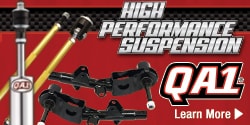This sounds like a lazy choke that is not fully snapping shut when set because you live in a hot climate, and choke never has to be activated to start the engine. This normal for southern cars we used to get in North East on used car lots, and generally just requires some cleaning, and adjustment. However there can be several additional reasons for choke not reacting correctly.
1, Failure to correctly activate choke during warm weather. By not exercising choke its linkage becomes corroded, and dirty causing binding and sluggish movement.
Depress accelerator to floor release, and depress it about ¼ down, than crank over engine. Perform no pumping, this only floods the engine making for real hard starts.
2, sticking dirty and or bent linkage rods connecting thermal bi metal spring to choke butterfly.
When engine is cold (overnight) remove air cleaner, by hand fully open throttle, and observe movement of choke rods, and high idle cam. You may have to repeat this process several times for your eye to catch all the action. After moving throttle, hold open throttle a small amount, and open and hold choke with other hand while releasing throttle. This will reenact a cold start. Do not oil any pivot points in linkage as it just collects more crud which will bugger up its free action a few weeks later.
3, If choke rods move freely by hand, but don’t respond to opening throttle simulating setting choke, you need to check the bimetal spring by pushing down on choke rod feeling for spring resistance. If no resistance is felt, there may be a way to adjust tension, or the spring has most likely broken. Broken spring can be checked by unbolting the cover of the choke stove recessed in the manifold and looking at it.
4, If spring is broken, you may be able to find a replacement, or if not there are retrofit electric choke kits available to replace factory device.
If you went through all the above, and choke looks and appears to work correctly after cleaning, adjustments, and some fiddling around, it may be time for a carburetor rebuild.
















